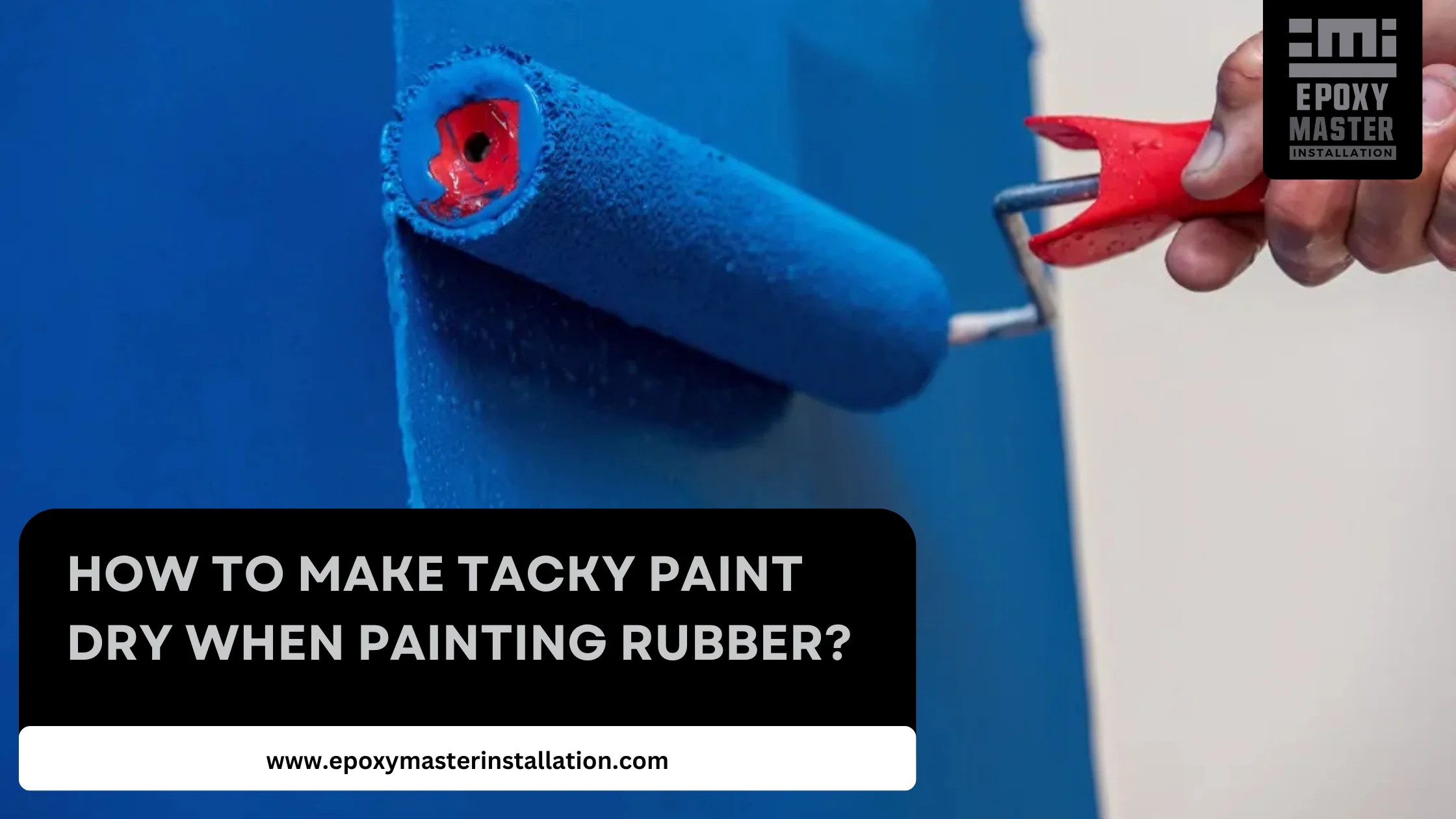
Painting can be a fun project, but painting rubber can be a little frustrating, as it does not dry easily and stays tacky if not applied or prepared well. If you are also tired of tacky paint that refuses to dry then you are at the right place. Whether you are working on a garage mat or transforming an old tire, we have got you covered. There is no hard science to get that paint stick and dry, just a few things to know and you are good to go.
At Epoxy Master Installation, we are all about durable, stunning floors with easy tricks and techniques to make your project outshine. Let's explore this blog and get that paint dry.
If you have slammed a layer of paint on a rubber surface and are struggling to make it dry, don't worry you are not alone. Rubber is unique, its flexible, non-porous surface causes the paint to stay tacky even after days of drying. Here are few reasons why paint stays sticky on rubber:
Wait, are you stressed? Below are a few easy steps discussed to get a tacky free finish.
As I said earlier, it is not hard science so just grab your supplies, turn on music and paint that rubber surface without worrying.
Paints' worst enemies are dirt and oils. Make sure to clean the surface properly with warm soapy water, then dry it with isopropyl alcohol (70% or higher). Lastly with a clean cloth, wipe and dry it completely. This first step is key to prevent tacky paint.
Choosing the right paint is crucial, but how to do that? Go for paints that fit right with rubber’s flexibility.
Avoid oil based paints, those are sticky and take forever to get dry.
Priming the surface before paint is important. Why? A primer helps paint stick like glue. Primers like Zinsser B-I-N or Plasti Dip Primer are non-porous primers. Just apply a thin layer, let it dry for a few hours and done, you are all set for painting.
Thick layers of paint cause tackiness. Avoid slamming paint on rubber surfaces, instead apply 2 to 3 thin coats of paint with a foam brush or spray can and let each layer dry for at least 30 to 60 minutes. Keep it thin and light for a neat and smooth finish.
There is no time to be lazy here. Tacky paint loves humidity and cold so we got to fight back. To avoid sticky paint on rubber speed up your drying process with:
This step is optional, but for extra durability seal the last coat of paint with a clear polyurethane or polyaspartic topcoat. Let it cure for 24-48 hours. This will help lock in that paint and prevent any tackiness
In a few hours you might feel like the paint is dried but wait, full curing takes 24 to 72 hours. Have patience and let it dry fully to avoid stickiness.
All set to rock your project? Painting rubber doesn't have to be a complete mess. With the right choice of paint and proper prep, you will find yourself with a beautiful, durable finish. Need professional help with bigger flooring projects? From epoxy to tile, Epoxy Master Installation has got your back. Contact us for more details, let's make your surface shine with expert skills and knowledge.
Q1. Why is my paint still tacky?
It can be because of wrong paint, poor prep, or humidity. To avoid tacky paint go for rubber friendly paints, clean the surface well, and add air flow for quick drying.
Q2. Can I skip sanding?
Light sanding can help with better adhesion, but a good primer will work great on a clean surface. Always test a small area first to avoid any blunders.
Q3. How long until paint cures on rubber?
It completely depends on paint type and conditions. In 1 to 2 hours, it is touch dry but to be fully cured it takes almost 24 to 72 hours.
Q4. Best paint for rubber garage mats?
For heavy duty materials like garage mats epoxy or acrylic latex works great.